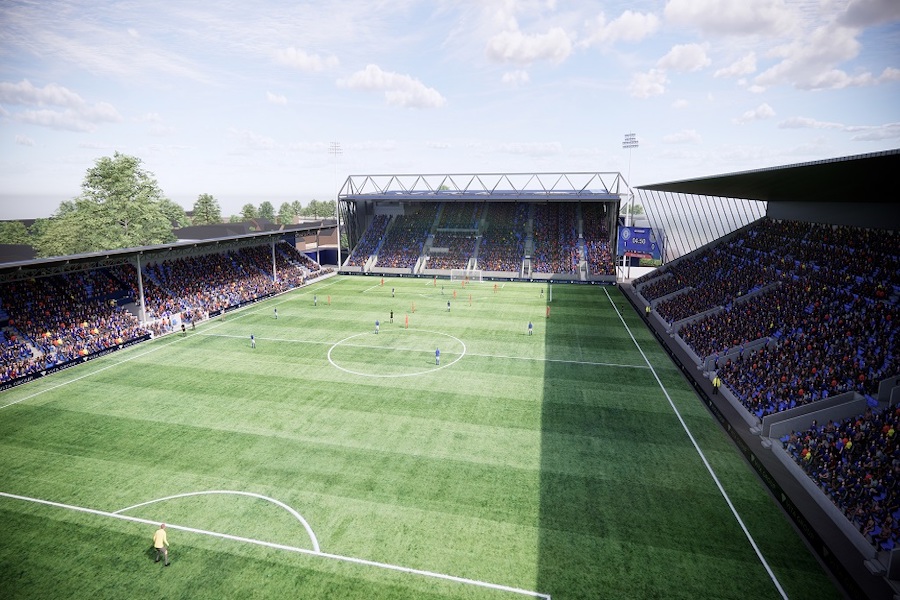The redevelopment, drawn up by FWP Architecture, will expand the League One side’s home from a capacity of 10,900 to just over 18,300, with a mix of full and outline planning consent paving the way for phased construction.
Central to the plans is the complete demolition of the East Stand: long known to fans as the Railway End, and its replacement with a modern, two-storey single-tier terrace. The new stand will seat 4,500 supporters and include concourses, food and drink outlets, club hospitality areas, turnstiles, lifts, staircases, a first-aid room, and a Changing Places facility designed to improve accessibility. The stand will stand up to 19.11 metres above ordnance datum.
The North Stand, renamed the Danny Bergara Stand in honour of the club legend, will be refurbished with a new monopitch roof and an eastern extension adding 600 seats, taking its capacity to 2,679.
Accessibility will be a strong feature of the new design, with an elevated viewing platform, 11 wheelchair spaces with companion seating, new concourse facilities, and accessible toilets. A further 600-seat western extension is included in outline plans and would be subject to a later reserved-matters submission.
The South Stand, also submitted only in outline, is earmarked for the Together Stand site. The parameters allow for a covered structure housing up to 5,500 fans, with a potential maximum height of 22.4 metres. Details of scale, appearance and design will be brought forward at a future stage should the club decide to progress.
Beyond the stands themselves, the scheme includes plans for upgraded floodlighting, new coach and car parking, improved pedestrian links and landscaping, a relocated media screen, and public-realm works to better integrate match-day crowds with the surrounding neighbourhood.
On non-match days, coach bays off Mercian Way and Bergara Close would double as staff and visitor parking.
Landscape proposals also include the removal of invasive species and new planting to reinforce the green buffer around the ground.
The council’s planning report identified the wider benefits of the redevelopment, estimating it could bring an additional £2.6 million of off-site spending into local shops, pubs and restaurants every year.
Around 300 construction roles are expected to be created during the build, with more than 40 new full-time jobs at the club once the stadium is complete, alongside a rise in casual match-day employment and training opportunities for academy players and sports professionals.
Negotiations over the planning approval also settled the timescale for delivery. While the club had asked for 10 years on the outline elements, councillors argued this would not fit with the pace of Stockport town centre’s transformation. A compromise was reached, giving six years for reserved-matters applications, with the full permission works subject to the usual three-year commencement rule.
The consent is conditional on a Section 106 agreement, requiring measures such as biodiversity monitoring, road improvements, funding for accessibility and wayfinding schemes, a residents’ permit parking system, and a management fee. Pre-commencement conditions will also need to be signed off before construction begins.
For supporters, the decision represents the beginning of a long-awaited modernisation of Edgeley Park, promising a ground fit for the future while retaining its historic home in the community. For Stockport as a whole, it signals investment that is expected to act as a catalyst for economic activity and regeneration well beyond the stadium walls.
You can find out more about the changes by clicking here

